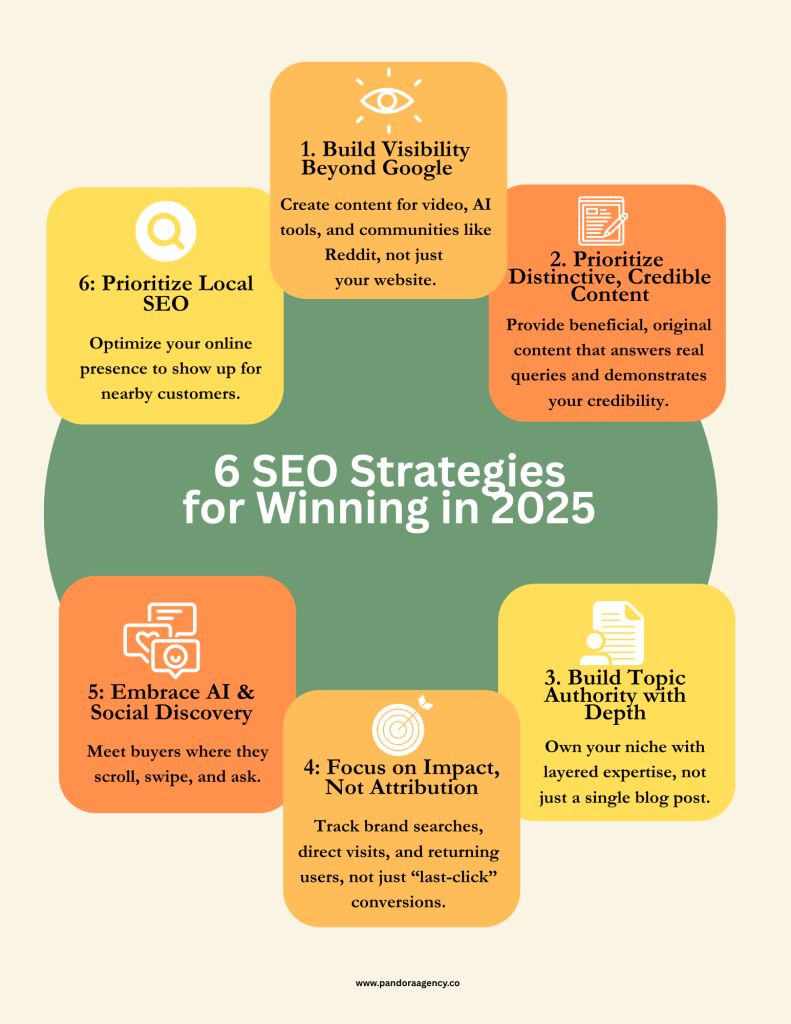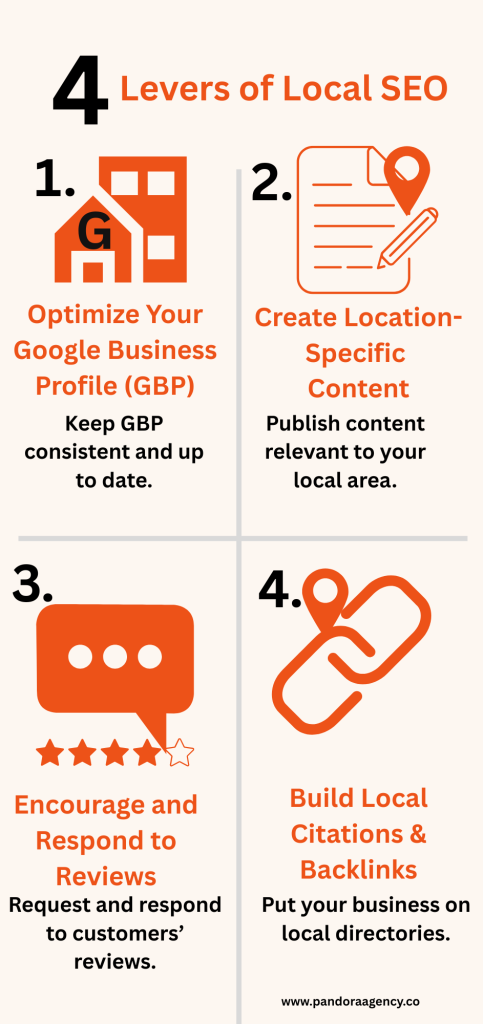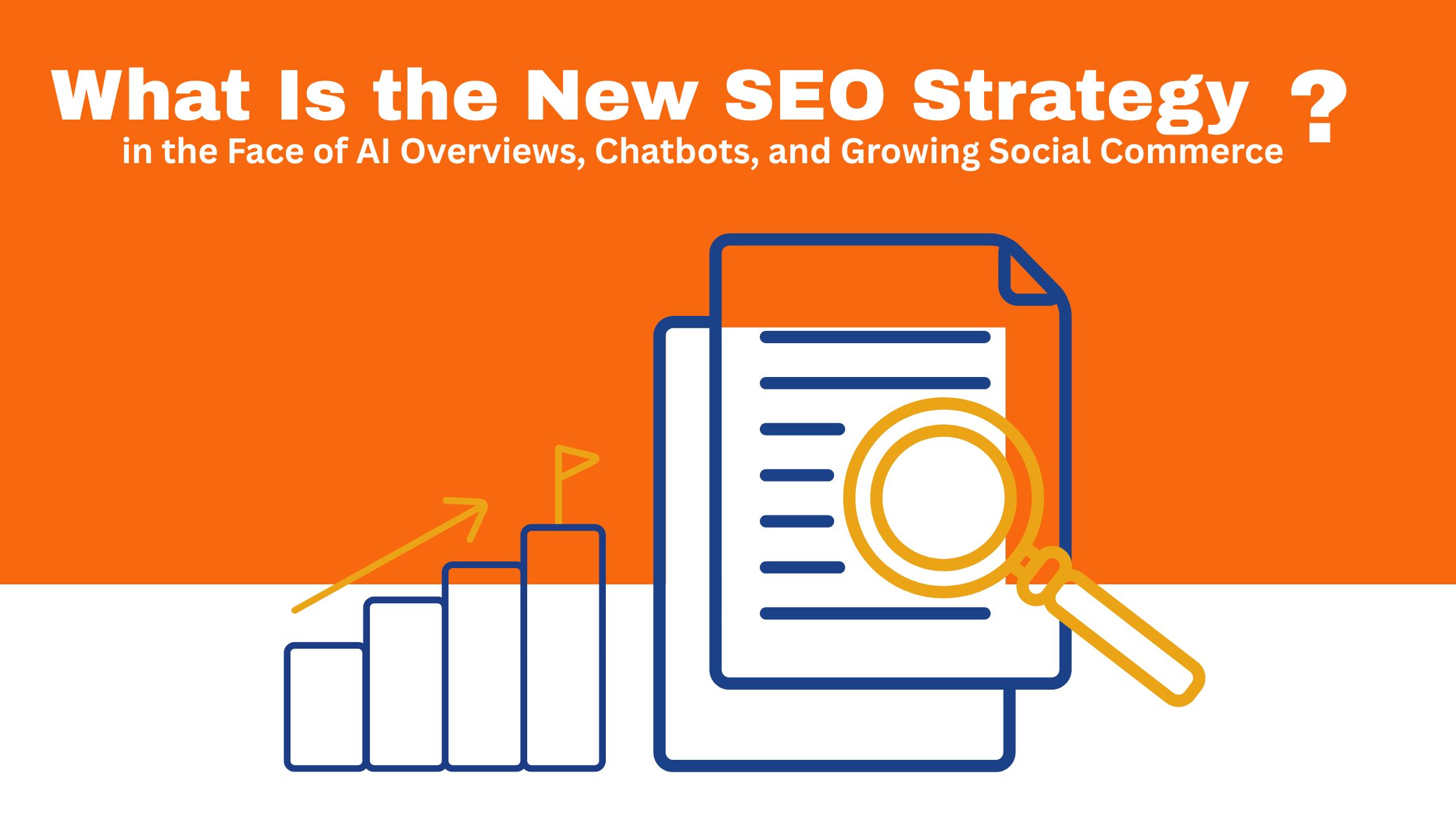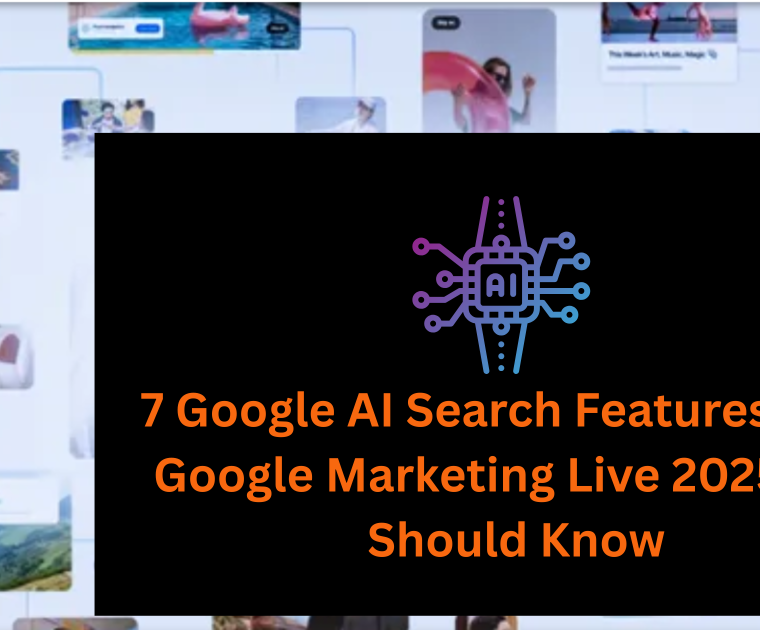What SEO strategy are you using in 2025? SEO has always evolved, but in 2025, we’re navigating the most significant shift in search behavior since Google became a verb. With AI Overviews, chatbots like ChatGPT, and discovery driven by YouTube, Reddit, and social commerce, businesses can no longer rely on old playbooks.
I’ve combed through expert discussions on this topic to provide a breakdown of what winning SEO looks like in 2025, utilising fresh data from recent research, expert insights, and personal experiences. Plus, I’ll show you how to apply these insights so your brand stays visible, valuable, and profitable.
What Is SEO Strategy in 2025?
An SEO strategy in 2025 is a comprehensive plan for building your brand’s visibility across search engines, AI tools, and platforms where your audience actively discovers and evaluates products or services.
It is no longer just about optimizing for Google’s algorithm or chasing rankings. Today’s SEO strategy is about creating distinctive, valuable content, showing up where your audience searches: be it Google, YouTube, Reddit, or ChatGPT and fostering trust and authority that AI summaries and social commerce algorithms recognize and elevate.
SparkToro’s Rand Fishkin puts it bluntly: “Traffic is a vanity metric… Let’s choose goals that actually impact the business positively.”
But what does this goal look like? Here’s a simple answer: modern SEO focuses on business impact, not empty clicks. So here are some outstanding SEO strategies to add to your existing SEO toolbox for maximum impact.
6 SEO Strategies for Winning in 2025

At the core of every successful online marketing strategies this year are five pillars that have stood out in expert discussions and in practice. Let’s break them down for effective application.
NEW: Have you read our New State of AI in Marketing in Nigeria report?
We surveyed marketers and brand leaders in Nigeria to learn the rate of AI adoption in their workflow, what they’re using it for, if it makes business sense, and future trends. We had a conversation with a representative of the Advertising Regulatory Council of Nigeria (ARCON) on their AI adoption restriction. All these you’ll find in this concise, easy-to-digest report.
1. Build Visibility Beyond Google
SEO today means making your brand discoverable not just on Google but across AI tools, social platforms, and video search. According to Datos Q1 2025, YouTube became the number one destination for search globally, surpassing even giants like Reddit and Amazon.
Meanwhile, AI platforms like ChatGPT entered the top five destinations from search in both the US and Europe. This tells us one thing: your audience is searching everywhere, and your brand must meet them where they are.
To succeed, you need to adopt marketing strategies with content that resonates on these platforms. That includes developing videos for YouTube that answer customer questions, engaging authentically in Reddit communities, and optimizing for AI tools so your brand is surfaced in summaries and recommendations. This is applicable to both B2B online marketing, leveraging the digital space for brick-and-mortar store marketing, SEO strategies for e-commerce websites, and even fintech SEO.
As an Entrepreneur, Rand Fishkin said, “Your brand needs to live and breathe everywhere your audience pays attention.” The era of search-only SEO is over. Basically, it’s 360 marketing done right!
2. Prioritize Distinctive, Credible Content
In 2025, I’ve noticed that content offering unique value is what gets surfaced by AI Overviews and earns attention across platforms. Generic articles and keyword-stuffed posts no longer cut it. This has proven to be true after analyzing hundreds of AI overview results.
Beyond my take on this, I asked a LinkedIn connection of mine, Rayhan Ahmed, a YouTube and web SEO strategist, what he thinks about ranking on the web in the era of AI Overviews, and his emphasis was on the importance of originality:
“…By concentrating on a few crucial areas, you can rank and increase organic traffic even with AI Overview: Provide original, beneficial information that addresses certain queries and offers genuine value. Cite credible sources, use real-world examples, and share personal experience to demonstrate your knowledge and credibility. Make use of the fundamentals of SEO, such as internal linking, keyword research, fast-loading pages, and schema markup. Focus on speciality subjects and long-tail keywords that AI summaries might overlook. Create a number of related articles rather than a single post to increase topic authority.”
So what is original content, for starters? For a business, original content refers to material that provides unique insights, experiences, or solutions that can’t be easily found elsewhere, especially not in AI summaries or generic blog posts.
These can include real-world case studies that showcase how your products or services have helped a client, insights derived from data your business has collected, opinion pieces based on your team’s hands-on experience, product tutorials, thought leadership pieces, founder perspectives, and original visual content.
When done right, this helps both traditional search engines and AI systems recognize and reward your work.

3. Build Topic Authority With Depth
AI summaries flatten nuance. That’s why building deep, authoritative coverage of topics is key. This means creating clusters of related articles that reinforce your expertise in specific niches. Long-tail keywords and specialized subjects are more likely to slip past AI’s broad summaries and help your content rank, get cited, or be featured.
Instead of publishing one piece on a topic, think in terms of a series, such as multiple, well-linked articles, videos, and infographics that give comprehensive answers. This strategy not only boosts your brand visibility in traditional search but also strengthens your chances of being included in AI-generated overviews.
4. Focus on Impact, Not Attribution
In a fragmented discovery landscape, trying to pin success on one source or click path is a losing game. Rand Fishkin calls this out:
“Fixating on attribution is a waste. The proof is in the bigger picture.”
Instead of chasing precise cause-and-effect relationships, focus on how your combined efforts enhance brand awareness, trust, and sales.
Here’s how another marketing expert puts it:
“I think the obsession with attribution stems from a need for certainty. But marketing rarely offers that. Relying too heavily on attribution can lead teams to undervalue the less tangible efforts that actually build trust and influence over time. It’s not about which post drove the final click; it’s about whether the brand was consistently present, credible, and compelling when the decision was made. Letting go of precise cause-and-effect thinking feels risky, but it opens the door to strategies that align more with how people 𝘢𝘤𝘵𝘶𝘢𝘭𝘭𝘺 experience and remember brands.”
Brian Oddo, CEO of Oddo Digital, shared a powerful example with a client:
“My favorite win of last year was for a local commercial painting client. We had only ~200 clicks the whole year. One of those clicks landed him a 2 million dollar deal with a hotel owner.”
Here at Pandora Agency, we’ve seen consistent growth in our website returning visitors and guess which pages continue to experience growth even in the era of zero-click? The About and the Home pages!
The takeaway? What matters is impact, not volume. Offer value always, and measure signals like brand search volume, direct traffic, and audience engagement across platforms, not just Google Analytics conversion paths.
5. Embrace AI and Social Discovery
AI tools like ChatGPT are no longer fringe channels; they’re mainstream search destinations. Meanwhile, social commerce platforms like Instagram, TikTok, and Reddit should be essential parts of your 2025 SEO mix. Datos Q1 2025 shows that users increasingly rely on these platforms for discovery, with traffic from AI tools often pointing users to task-based destinations like YouTube and GitHub.
This means you need to optimize for AI readability and social engagement. Structure your content with clear headings and concise answers that AI systems can summarize accurately. At the same time, ensure that your products and content are visible in social commerce ecosystems through hashtags, product tags, and platform-specific SEO strategies.
6. Prioritise Local SEO
First, what is Local SEO?
Local SEO is optimising your online presence to appear in search results when people are looking for businesses in your area.
It entails creating and optimising your Google Business Profile, creating content that offers value to local searchers, encouraging user reviews and ratings, enhancing website performance, and making sure your technical SEO is excellent.
Local SEO helps brick-and-mortar and service-based businesses get found through search, without breaking the bank on paid advertisement. They can achieve this by optimising their online presence, focusing on location-based keywords, and building a strong local citation profile.
If you’re a service-based business, learn more about SEO for Professional Services and how you can win.
What Does Local SEO Look Like in 2025?
Local SEO isn’t just about showing up on a map; it’s about becoming the go-to brand in your community’s digital and physical spaces.
In 2025, when AI-generated results dominate broad queries, local intent searches remain one of the last strongholds of traditional search visibility.
Research shows that AI Overviews appear in less than 7% of local “near me” searches, meaning Google Maps and local packs still reign supreme in these scenarios.
That makes Local SEO more valuable than ever, especially for brick-and-mortar businesses, healthcare providers, law firms, restaurants, and service-based SMEs.
“Local SEO is a trust signal,” says Claire Carlile, Local Search Expert and BrightLocal contributor. “If Google sees consistency in your business listings, reviews, and location-specific content, it sees your brand as legitimate and relevant.”
To win in local search, focus on these four levers:

1. Optimize Your Google Business Profile (GBP)
Your GBP is your modern storefront. Ensure your business name, address, and phone (NAP) are consistent across the web. Opening hours must be accurate and updated. Photos should be high-quality and regularly refreshed. Products and services must be listed with descriptions and keywords. Your posts should include events, offers, or announcements to boost relevance.
According to Whitespark’s 2024 Local Ranking Factors, Google Business Profile signals were the #1 ranking factor for the local pack.
2. Create Location-Specific Content
Generic blogs don’t help you rank locally. Instead, write about local events, case studies, or customer stories. Create landing pages for each location you serve. Use local schema markup and embed maps. This signals to Google that your business is embedded in the local context, not just targeting keywords.
3. Encourage and Respond to Reviews
Online reviews are digital word-of-mouth. They’re critical for ranking and conversion. BrightLocal found that 87% of consumers read Google reviews for local businesses in 2024, and Google uses review volume and sentiment in its local ranking algorithm.
Ask for reviews through post-purchase emails or QR codes at physical locations. Respond to every review, both positive and negative, to show credibility and engagement.
4. Build Local Citations and Backlinks
List your business on trusted local directories like VConnect, BusinessList Nigeria, or Yellow Pages, depending on your location. Partner with local news outlets, bloggers, or chambers of commerce to earn backlinks that prove your relevance in that city or region.
Why Local SEO Matters in 2025
AI can predict user intent, but proximity-based relevance still matters most in many industries. When someone searches “dentist near me” or “best meat depot in Lekki,” Google’s traditional local pack with maps, business cards, and reviews still dominates.
If you run a local or regional business, investing in local SEO means:
- More foot traffic
- Higher trust through reviews and visibility
- Less competition from national brands
“Local SEO is one of the most cost-effective strategies small businesses can adopt because the people searching are already motivated,” says Greg Gifford, VP of Search at SearchLab.
SEO Strategy Checklist (5 Steps to Success)
1. Diversify platform visibility
AI Overviews now appear in nearly 55% of Google searches. YouTube surpasses Reddit and Amazon as the top search destination, while ChatGPT and other AI tools regularly feature in the top five search destinations.
What should you do with all this information? The answer is simple: aim to show up in AI summaries, video search results, and social platforms where your audience seeks answers.
2. Craft original, credible content
Nearly 58.5% of searches in the U.S. result in “zero-click” outcomes. Generic, rehashed material is ignored. This means users can get answers without visiting your site. To earn clicks, quotes, and shares, offer extremely hard-to-replicate value such as case studies, personal stories, or original research. As experts advise, “Focus on creating high-quality, relevant content. No Boo baloney.”
3. Build deep topic clusters
AI Overviews (AIOs) often cite sources ranked 11–20. In-depth, well-structured clusters boost your chances of being referenced and included in AI Overviews. Link content tightly to help AI tools recognize your authority.
4. Measure impact holistically
Clicks aren’t everything. One conversion can be worth millions, as we’ve observed over time. Track outcomes like brand searches, direct visits, and cross‑platform engagement, not just last-click conversions.
5. Optimize for generative AI & social commerce
Google’s AI Overviews reach 1.5 billion users monthly. Yet they reduce clicks by ~35%. You might want to structure content for clear AI summarisation, including concise headings, factual bullet points, schema markup, and “people ask” sections. Meanwhile, don’t forget to create content on platforms like TikTok and Instagram with proper tagging to help capture commerce traffic.
What does an seo strategy look like in 2025? (Image)
Key Takeaway
SEO in 2025 is a combination of search, AI, and social commerce. As Datos puts it, “Search is no longer confined to a single engine or experience.” The brands that thrive today are those that understand this new reality and adapt. The future belongs to those who create value across ecosystems, build trust at every touchpoint, and measure success by meaningful impact, not empty clicks.
If you want to stay ahead, now’s the time to evolve your SEO strategy. Focus on where discovery is happening, create content worth discovering, and measure what truly matters.
FAQs
What is seo marketing strategy?
An SEO marketing strategy is a long-term plan to increase a brand’s visibility in search results by creating valuable content, optimizing it for discoverability, and building authority across platforms. In 2025, this includes not just Google, but YouTube, Reddit, AI chatbots like ChatGPT, and social commerce platforms like TikTok and Instagram.
It involves both technical and creative elements, including keyword research, on-page SEO, link-building, structured data, and aligning content with search intent. But most importantly, it focuses on building topical authority, trust, and brand recognition metrics AI systems and users alike prioritize.
SEO strategy in 2025 is not just about ranking #1 on Google; it’s about being present when and where your audience is searching.
How Do You Create an SEO Strategy?
Creating an SEO strategy involves five foundational steps:
- Audience Research: Understand where and how your audience searches on Google, YouTube, Reddit, TikTok, or through AI tools.
- Topic and Keyword Mapping: Use tools like Ahrefs, Google Trends, and Reddit search to identify questions, pain points, and long-tail keywords.
- Content Planning: Build topic clusters that offer in-depth answers, product education, and unique insights AI tools can’t synthesize.
- Platform Optimization: Structure content for each platform’s strengths: schema markup for Google, hashtags for social, conversational tone for AI tools.
- Measurement & Feedback Loops: Use metrics like brand search growth, direct traffic, and multi-platform engagement, not just click-throughs.
In 2025, integrating video SEO, AI summarization structure, and user-generated content will greatly improve visibility and credibility.
How To Create an Effective Google SEO Content Strategy in 2025?
In 2025, an effective Google SEO content strategy must align with how Google’s Search Generative Experience (SGE) and AI Overviews work.
These tools are changing how people find and understand information. Instead of just showing a list of links, Google now uses AI to summarize the best answers from different websites and display them right on the search results page.
To navigate this trend, at Pandora Agency Limited, we continue to create clear, trustworthy, and helpful content so that Google’s AI can recognize it and include it in these summaries. If your content doesn’t stand out or offer real value, it may not be picked up by the AI, even if it’s technically well-optimized.
Image showing Pandora Agency on AI Overviews.
To stay ahead, your Google SEO content strategy must focus on answering questions in a clear and useful manner. Consider what people truly want to know and provide them with comprehensive, easy-to-read information. Use headings, clear structure, and expert-backed facts.
This helps Google’s AI understand your content and show it to searchers in Overviews. If your content is confusing, vague, or unoriginal, it won’t be chosen, no matter how many keywords you use.
Here’s what to do:
- Focus on EEAT (Experience, Expertise, Authoritativeness, Trust): Google’s AI looks for content that demonstrates personal experience and professional credibility.
- Target Long-Tail, Question-Based Keywords: These are more likely to be pulled into AI Overviews.
- Structure for Featured Snippets and Summaries by using clear headings and bullet points, and Q&A style sections.
- Include Visuals: Google increasingly displays YouTube results, and AI prefers mixed media in its recommendations.
- Use First-Party Data and Real Examples: AI prefers sourcing data it can’t generate, honest user feedback, interviews, quotes, or proprietary stats.






Leave a Reply